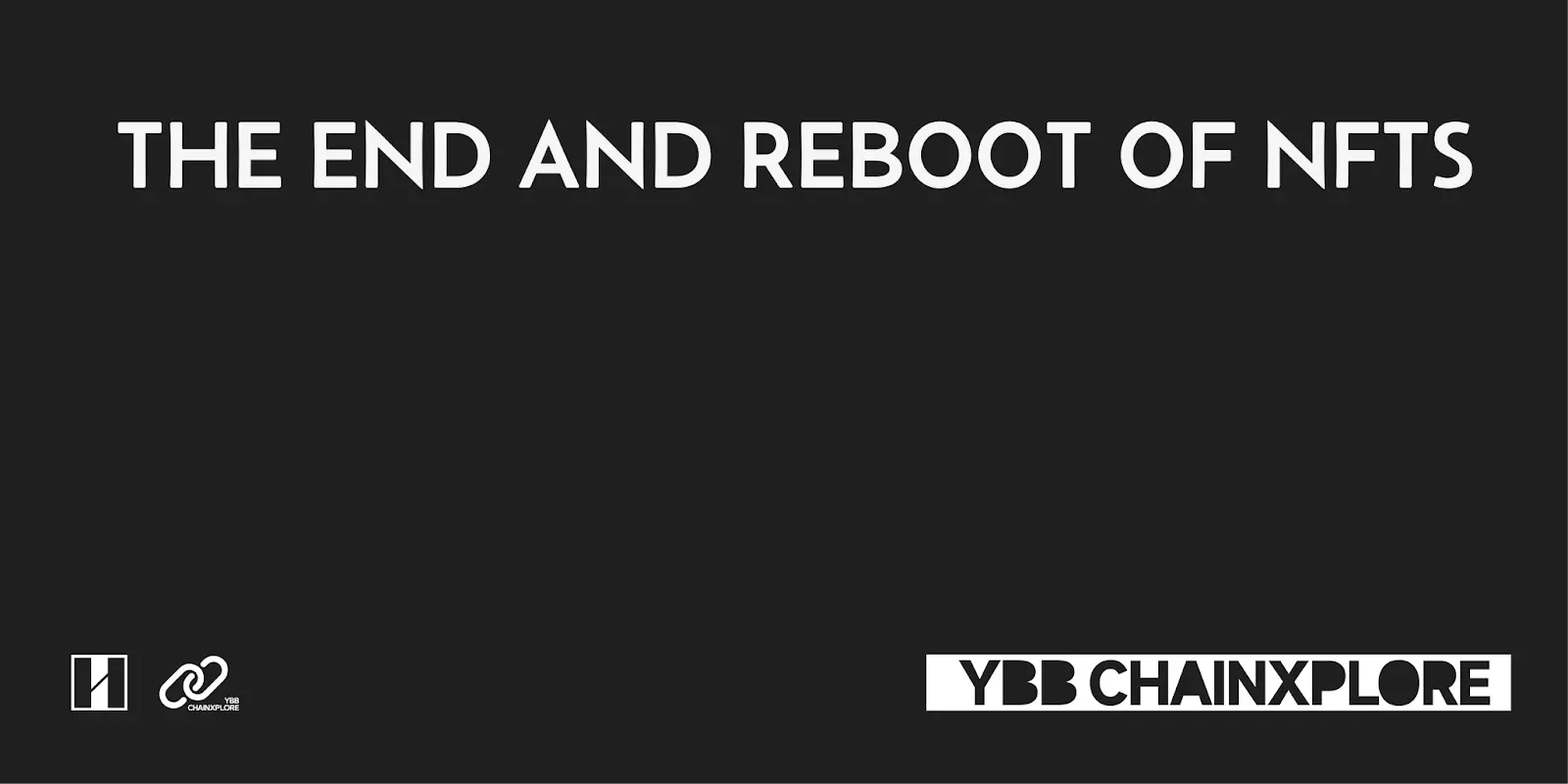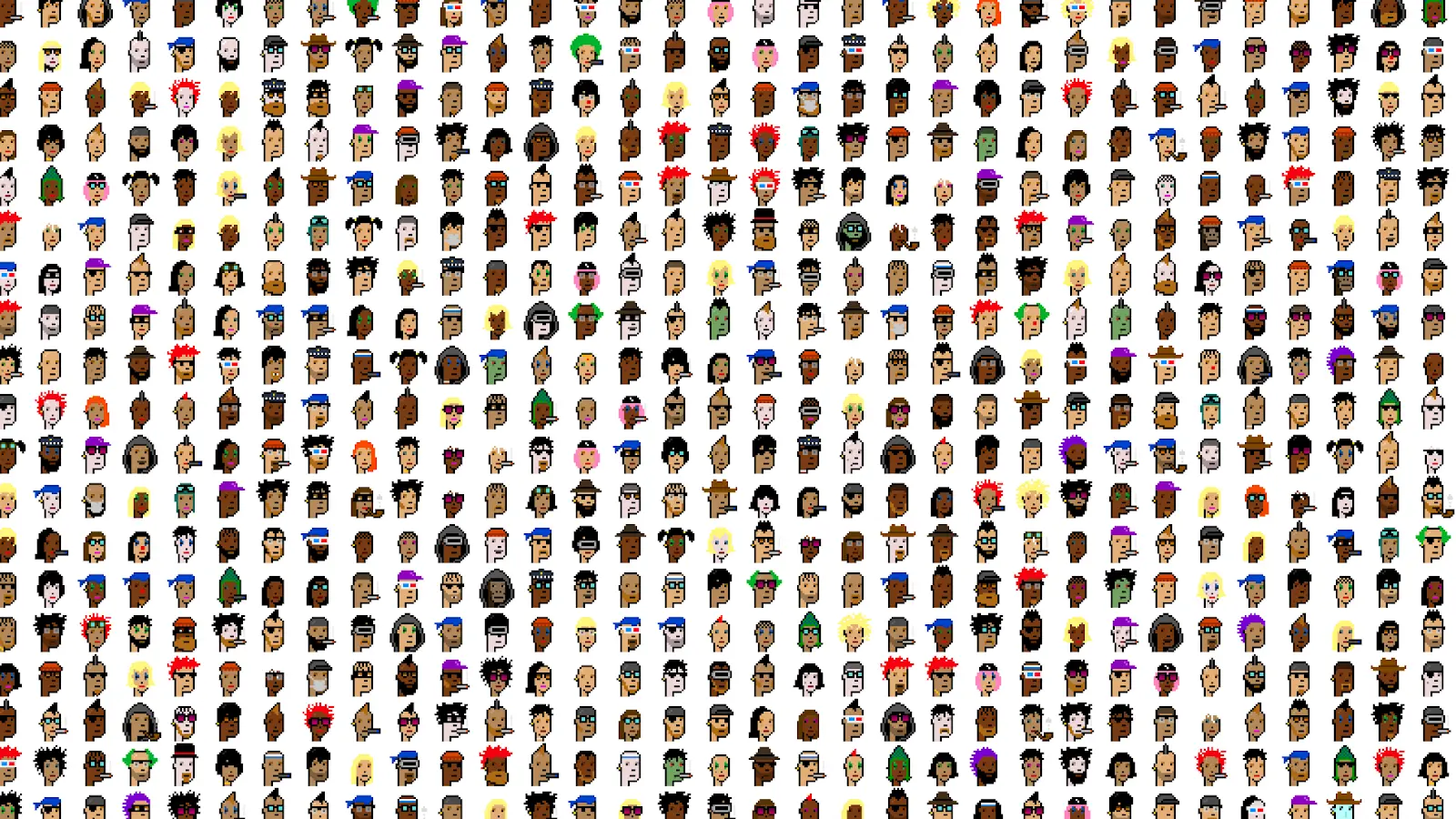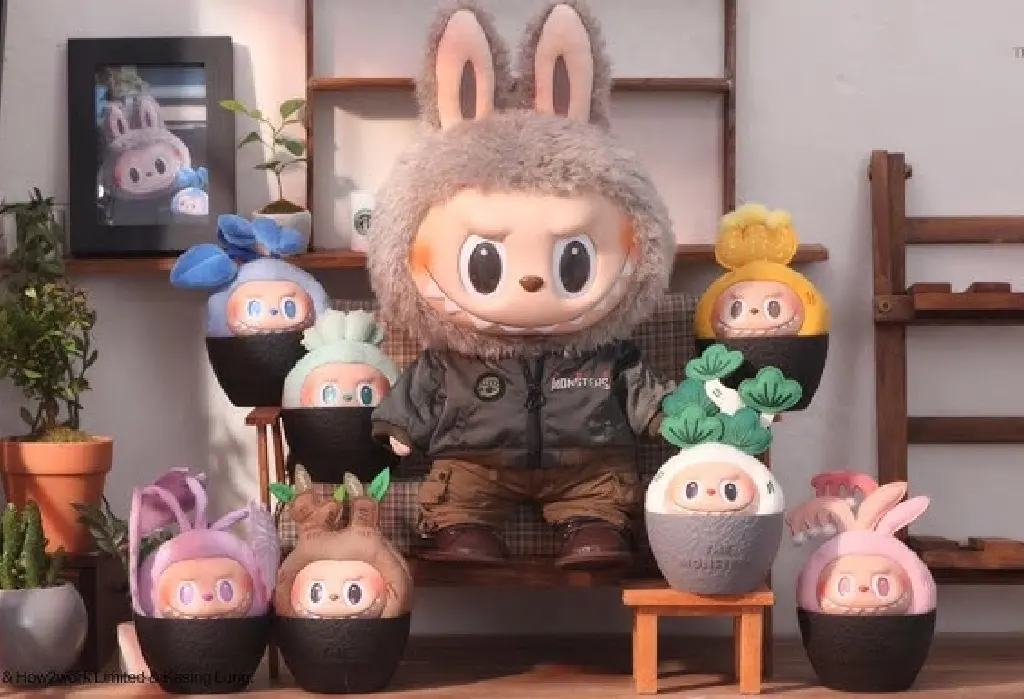Original Author: YBB Capital Researcher Zeke

I. The Collapse of NFTs
The last cry of NFTs ended with the token issuance of Pudgy Penguins, while the recent token launch of Doodles on Solana only made a few ripples. Yuga Labs' subtraction continues, this time even affecting its most iconic IP, Cryptopunks. The Bitcoin NFTs that were part of the last wave of NFT revival are also nearly worthless now; these once-crazy narratives have indeed fallen into desolation, with no one paying attention anymore.

The vision of 10k PFPs was once beautiful, with a community of just the right size helping a grassroots IP project reach the world, which is completely different from traditional IP projects that first invest heavily in content support. For example, Disney's Marvel Universe, Star Wars, and various animated characters often require years of accumulation and countless funds to deeply embed these IPs in people's hearts, ultimately turning them into gold mines.
NFTs, however, are entirely different; the entry barrier is extremely low, and the speed of creating an IP and assetizing it is quite fast. Creators only need to pay some Gas fees to list their artworks for sale on Opensea, with no galleries, no toy companies, no film studios, and no need for any professional teams—an IP and a new artist are born.
We witnessed, three to four years ago, that some grassroots IPs became popular in the top entertainment circles of Europe, America, Japan, and South Korea. A grassroots artist could achieve a remarkable turnaround through NFTs. For me, as a member of Generation Z who grew up watching Japanese anime, being able to participate in IP investment and incubation that was once inaccessible to ordinary people through Crypto is indeed a dreamlike experience.
However, after the "crazy nesting dolls" of BAYC and the disastrous release of Azuki's sub-series Elemental, the ambiguous status of NFTs gradually became clear. They do not resemble equity or investments; instead, they are more like expensive luxury goods with membership benefits. Meanwhile, project teams expect us to continuously purchase sub-series to support their ongoing investment in the IP value core Roadmap. The seeds of contradiction were sown here; project teams know that creating content is expensive, but without it, the IP will die. The sub-series released every few months continuously drain the blood of OG series holders, tormenting every member of the community, and the feedback from content may take many years to arrive, or perhaps that feedback will never come. The cracks began to widen, and those beautiful fantasies shattered with the decline in floor prices, leaving only various conflicts.
II. The Ace MCN in the IP World - PoP MART
If we view NFTs as luxury trendy toys for Generation Z, the reasons for their rise and fall become clearer. In the fast-food era, lacking content is not necessarily a bad thing; after all, mere appearance can quickly attract buyers. For instance, Azuki's art style aligns well with Asian aesthetics, and under this consensus, this grassroots-produced NFT series could follow BAYC to become the third-largest blue-chip. In the real world, well-known trendy toys like Bearbrick, B.Duck, and Molly also lack content support but have gained immense popularity due to their unique appearances.
However, trends are fleeting; without content as a value core, these IPs can become outdated at any moment. Limited by the culture of the crypto world and the extremely low success rate of NFTs, project teams often revolve around a single IP, continuously creating derivatives. But the reality is that the core has not even taken shape before the trend passes.
Of course, there are PFP projects that have sufficient content support, such as Japanese NFTs. In the past, I have seen at least four or five projects holding well-known Japanese anime IPs hoping to make a splash in the NFT market, but they seem to have overlooked the fact that the fan base for these IPs is almost entirely incompatible with this circle. Secondly, the merchandise surrounding Japanese anime has long been abundant, so why would fans spend hundreds of times the price to buy a small image? Most importantly, the third point is that this small image can only be an image, and the future potential for empowerment is zero. Even if you purchase a high-value NFT, you can only gain access to the Gundam metaverse "SIDE-G." The profits from models, games, and animations have nothing to do with you, and the community will not be part of the IP incubation; in the entire Gundam fan community, you might even be considered an outsider. In this regard, the pain points of GameFi are quite similar.
Thus, PFP projects have become a false proposition, with only the pragmatic spark of the little penguins still striving. So, does the small image have another way out? I believe PoP MART may provide a different answer.
Originating from a small store in Beijing's Euro-American Shopping Center, it turned around by representing Sonny Angel. This single series contributed nearly 30% of PoP MART's sales at the time, and the envious copyright holder reclaimed exclusive agency rights a year later, but this move instead led to the birth of an IP empire.

Wang Ning (founder of PoP MART) had a simple idea at that time: create proprietary IPs that cannot be taken away by others. In 2016, PoP MART collaborated with Hong Kong designer Wang Xinming to launch its first self-owned trendy toy series—Molly. This pouting little girl quickly became a nationwide sensation, driven by the uncertainty and dopamine stimulation of the blind box model. PoP MART began its first rocket-like rise, and by 2019, Molly's single IP annual sales reached 456 million yuan, becoming the core source of income for PoP MART at that time.
This strategy, combining Japanese capsule toys with high-end trendy toys, became quite common in the subsequent NFT boom. Artists design basic elements, which are then combined by project teams into series images for sale and operation. NFTs are generally released in blind box formats during their initial phase, with project teams releasing various rare combinations of images to enhance players' purchasing desire.
The only difference is the form of release, but tens of thousands of NFT projects and various blue chips have generally failed. Yet PoP MART is now experiencing a second spring; why?
I once attributed the reason to the difficulty of landing and the high purchasing threshold. The former seems to have no issues at present, while the latter is not entirely true. NFTs also had a Free Mint period, with Goblintown and MIMIC SHHANS being golden dogs of that time, where creators earned a fortune just from transaction commissions. Many NFTs from the inscription era were even more decentralized on this basis, but that did not prevent the decline of NFTs. Forming or joining an IP community is very simple; the challenge lies in sustainability.
Therefore, I believe we may have a model error. After the first rocket-like rise, Molly did not make PoP MART a legendary brand; the company's stock price, like NFTs, fell from 2021 to 2024. However, PoP MART has made a comeback, relying on a complete IP wall. Today, PoP MART has 12 proprietary IPs, including Molly, DIMOO, BOBO&COCO, YUKI, and Hirono, as well as 25 exclusive IPs, including THE MONSTERS (including Labubu) and PUCKY, SATYR RORY, along with over 50 non-exclusive co-branded IPs like Harry Potter, Disney, and League of Legends.
People's preferences are always fickle, and the life of an IP is limited, but what if I have hundreds of choices? Now, Labubu is exploding in popularity in Europe, America, and Southeast Asia, with the value retention of its surrounding dolls comparable to plastic Maotai. Yuga Labs' ideal state ultimately materialized in Web2, and all of this is not a coincidence.
We need to rethink what the IP business is, what the NFT Roadmap is, and why PoP MART can achieve such heights without content support.
III. Pudgy Penguins

Last year, I also attended an event for Pudgy Penguins in Hong Kong; this NFT project has always been so enthusiastic towards its community.
The success of Pudgy Penguins lies in pragmatism, pragmatism, and more pragmatism. NFTs themselves do not have any technical distinctions; no matter how cleverly designed the Mint process is, it ultimately results in a JPG. The difficulty of NFTs lies in the realization of the IP, which is hundreds of times more challenging than creating 10K PFPs. Yuga Labs wants to create a Metaverse, Azuki wants to create anime. Okay, that's cool, but these projects, which start with costs in the hundreds of millions, will only ask the community members to shell out money.
This extremely compressed world is too restless; everyone wants quick success. Holders want to make big money, and project teams want to achieve instant success. Few blue-chip projects are willing to bow down, and in the end, the more impatient they are, the worse they fall. The original team of Pudgy Penguins was once a similarly restless grassroots team, and after suffering from negative reviews, they sold the little penguins at a low price.
At this point, the little penguins met their true owner, Luca Netz, a worker with years of experience in physical marketing, who brought the little penguins back to their rightful height. Luca Netz is genuinely building a brand; he operates a company for NFT holders. From marketing to plush toys to future games, every step of the little penguins is solid. The company can be profitable, and holders can also profit. None of this is particularly special; it is simply doing what it should do. Therefore, it has been proven that grassroots IPs can exist in Web3; it is just that there are too many project teams that cannot lower their status.
Thus, I dislike the term "falsification," as if certain things should never exist. Electric vehicles were once considered foolish, and Siri on my phone was also quite silly. But that does not prevent green license plate cars from filling the entire city today, and AI needs no further mention.
Many so-called falsified tracks will still be explored by Web3 in the future; it just lacks a suitable project team.
IV. Pathways
The path to success is simple, yet difficult. The next stop for PFPs must break free from some inherent logical frameworks of Crypto; to become the next Web3 Disney requires substantial accumulation. Whether the scarcity of NFTs has been counterproductive in the process of reaching the masses is something I have discussed in my previous articles. If we define it as a trendy toy consumer product, then the limitations of 10K may be too great. If we define it as a unique asset and fundraising method in Web3, then IP must ultimately be transformed into tangible consumer products to fulfill its promises to the community, rather than a bunch of strange sub-series.
Given the unique culture of the crypto world and the attributes of NFTs, it is indeed unfortunate to cling to an IP until old age. How can we innovate on these PFPs? How can we expand a project into an IP factory? This may require us to embrace some new concepts and introduce more technologies and gameplay.
V. Is Token Issuance the Final Stop?
What is the significance of NFT token issuance? I still do not understand. This situation resembles a form of exploitation from the higher-ups to the lower ranks, as well as a dilution of the value of OG NFTs. I can only interpret it as the project seeking a convenient way to exit with liquidity.
From APE to DOOD, without exception, they all resemble variants of air coins. Their empowerment often involves staking to earn some on-chain trading dividends, purchasing items in the Metaverse, or governance rights. In an ideal scenario, it is a perfect cycle among holders → stakers → developers. However, in reality, it resembles a form of air, caught in a death spiral of NFT depreciation, diminishing gold mining returns, and token depreciation.
For OG NFT holders, although tokens may dilute some dividends and rights, most will also receive a large airdrop during the TGE, so no one complains. But in the long run, as mentioned in the fourth paragraph, this is indeed a form of dilution, and distributions like Azuki's Anime are outright theft.
Short-term hype is important, but the long-term survival of the project is even more crucial; do not let token issuance become the final stop.
Conclusion
In this fast-paced, dopamine-driven era, we have witnessed the rise of many emerging Web2 IPs. NFTs should thrive in this environment, as they possess many irreplaceable characteristics. Four years ago, I viewed them as cyber Maotai, but the reality is that they are cyber tulips. Few are willing to manage the ruins, but I believe that beneath the ruins lies the next Labubu.
免责声明:本文章仅代表作者个人观点,不代表本平台的立场和观点。本文章仅供信息分享,不构成对任何人的任何投资建议。用户与作者之间的任何争议,与本平台无关。如网页中刊载的文章或图片涉及侵权,请提供相关的权利证明和身份证明发送邮件到support@aicoin.com,本平台相关工作人员将会进行核查。




